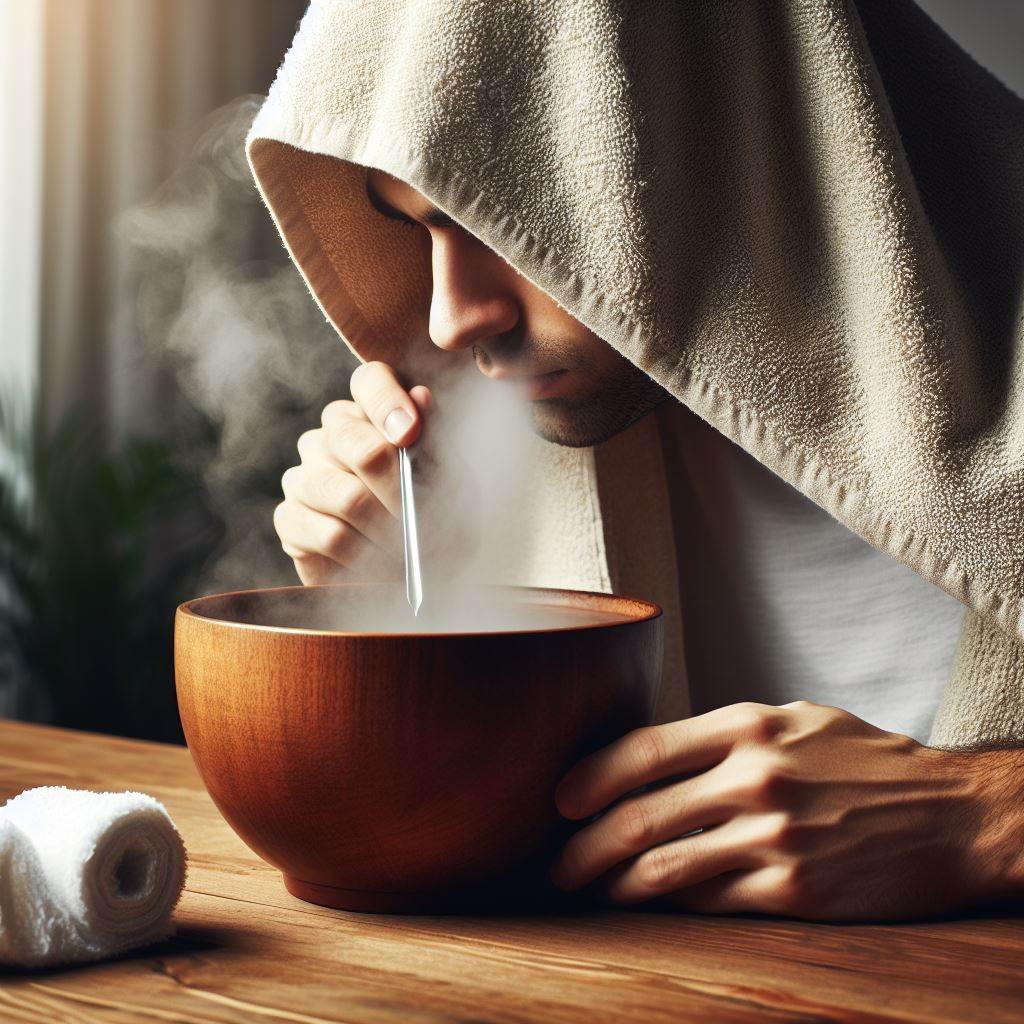Cold and flu season can be challenging, but there’s solace in knowing that many effective remedies are found right in your kitchen. Explore these tried-and-true methods, passed down through generations, to help alleviate symptoms and promote healing during times of illness.
1. Turmeric Milk (Haldi Doodh): A Golden Elixir for Wellness

How to Make Turmeric Milk:
- Begin by warming a glass of milk in a saucepan over low heat.
- Add a teaspoon of turmeric powder to the milk.
- Stir the mixture thoroughly until the turmeric is fully dissolved.
- Optionally, sweeten the turmeric milk with honey to taste.
- Enjoy this comforting drink before bedtime or when feeling under the weather.
Benefits of Turmeric Milk:
- Turmeric contains curcumin, a compound known for its anti-inflammatory properties, which can help soothe sore throats and reduce inflammation in the body.
- The antimicrobial properties of turmeric may also aid in fighting off infections, making turmeric milk a go-to remedy for colds and flu.
Additional Tips:
- Consider adding a pinch of black pepper to your turmeric milk to enhance the absorption of curcumin by the body.
- Experiment with other warm spices like cinnamon or ginger for added flavor and health benefits.
2. Ginger Tea: Nature’s Decongestant

How to Make Ginger Tea:
- Peel and slice fresh ginger root into thin slices.
- In a pot, bring water to a boil and add the ginger slices.
- Allow the ginger to simmer in the water for 10-15 minutes to infuse its flavor and nutrients.
- Strain the ginger tea into a cup and add honey and lemon juice to taste.
- Sip on this aromatic tea throughout the day to ease congestion and soothe a scratchy throat.
Benefits of Ginger Tea:
- Ginger contains bioactive compounds such as gingerol, which possess potent anti-inflammatory and antioxidant properties.
- Drinking ginger tea can help alleviate symptoms of respiratory infections by promoting expectoration and relieving nasal congestion.
Additional Tips:
- For an extra boost of warmth and flavor, add a cinnamon stick or a few cloves to your ginger tea while it simmers.
- If you prefer a milder taste, adjust the amount of ginger or honey in your tea according to your preference.
3. Garlic: Nature’s Antibiotic

How to Use Garlic for Cold and Flu Relief:
- Consume one to two cloves of raw garlic daily for immune support.
- Incorporate crushed or minced garlic into soups, stews, or salad dressings for added flavor and health benefits.
Benefits of Garlic:
- Garlic contains allicin, a sulfur compound with powerful antibacterial, antiviral, and antifungal properties.
- Regular consumption of garlic may help reduce the severity and duration of cold and flu symptoms by boosting the immune system and combating infectious pathogens.
Additional Tips:
- To minimize the pungent odor of garlic, try swallowing whole cloves with a glass of water or milk.
- Consider using garlic supplements if raw garlic is not palatable or if you prefer a convenient alternative.
4. Tulsi (Holy Basil) Tea: Nature’s Healing Herb

How to Make Tulsi Tea:
- Pluck fresh tulsi leaves from the plant and wash them thoroughly under running water.
- Bring a pot of water to a boil and add the tulsi leaves.
- Allow the leaves to steep in the hot water for 5-7 minutes to extract their medicinal compounds.
- Strain the tea into a cup and enjoy its aromatic flavor and health benefits.
Benefits of Tulsi Tea:
- Tulsi, or holy basil, is revered in Ayurveda for its therapeutic properties, including its ability to boost immunity and reduce inflammation.
- Drinking tulsi tea can help alleviate cold and flu symptoms by supporting respiratory health and strengthening the body’s natural defense mechanisms.
Additional Tips:
- Consider growing a tulsi plant at home for a fresh and readily available supply of tulsi leaves.
- Experiment with different varieties of tulsi, such as Krishna tulsi or Rama tulsi, to discover unique flavors and medicinal properties.
5. Honey and Lemon Water: Soothing Elixir for Sore Throats

How to Make Honey and Lemon Water:
- Squeeze the juice of half a lemon into a glass of warm water.
- Add a teaspoon of raw honey to the lemon water and stir until dissolved.
- Sip on this refreshing beverage throughout the day to soothe a sore throat and boost your immune system.
Benefits of Honey and Lemon Water:
- Honey is known for its antimicrobial properties, which can help kill bacteria and soothe inflamed throat tissues.
- Lemon juice is rich in a powerful antioxidant that supports immune function and helps fight off infections.
Additional Tips:
- Use organic, raw honey for maximum health benefits, as processed honey may lack the enzymes and nutrients found in raw honey.
- Adjust the amount of lemon juice and honey in your water according to your taste preferences and the severity of your symptoms.
6. Steam Inhalation: Natural Respiratory Therapy

How to Perform Steam Inhalation:
- Boil a pot of water on the stove and remove it from the heat once it reaches a rolling boil.
- Carefully transfer the hot water to a heat-safe bowl or basin placed on a flat surface.
- Position your face over the bowl and cover your head with a towel to trap the steam.
- Inhale deeply through your nose for 5-10 minutes, allowing the warm, moist air to penetrate your nasal passages and lungs.
Benefits of Steam Inhalation:
- Steam inhalation helps loosen mucus and congestion in the respiratory tract, making it easier to breathe and expel phlegm.
- The warm, humid air soothes irritated throat tissues and reduces inflammation, providing immediate relief from cold and flu symptoms.
Additional Tips:
- Enhance the steam inhalation experience by adding a few drops of essential oils such as eucalyptus, peppermint, or tea tree oil to the hot water.
- Be cautious when handling hot water to avoid burns or scalding, especially when performing steam inhalation with children or elderly individuals.
7. Hot Soups and Broths: Nourishing Comfort Food


How to Prepare Healing Soups and Broths:
- Start by selecting a variety of fresh vegetables, herbs, and spices for your soup base.
- In a large pot, combine the ingredients with water or vegetable broth and bring to a gentle simmer.
- Allow the soup to cook slowly over low heat until the vegetables are tender and the flavors have melded together.
- Season the soup with salt, pepper, and additional herbs to taste before serving piping hot.
Benefits of Hot Soups and Broths:
- Nutrient-rich soups and broths provide essential vitamins, minerals, and antioxidants to support immune function and promote healing.
- The warmth of the soup helps soothe aching muscles, alleviate congestion, and provide comfort during illness.
Additional Tips:
- Experiment with different soup recipes and flavor combinations to keep meals interesting and satisfying.
- Consider adding protein-rich ingredients such as chicken, tofu, or beans to your soups for added nutrition and satiety.
8. Warm Salt Water Gargle: Simple and Effective Throat Remedy

How to Perform a Salt Water Gargle:
- Dissolve half a teaspoon of salt in a glass of warm water until fully dissolved.
- Take a sip of the salt water solution and tilt your head back slightly.
- Gargle the saltwater in your mouth for 15-30 seconds, swirling it around your throat and mouth.
- Spit out the salt water and repeat the gargling process several times, as needed.
Benefits of Salt Water Gargle:
- Salt water gargling helps reduce inflammation, kill bacteria, and loosen mucus in the throat, providing relief from soreness and irritation.
- Gargling with salt water can also help prevent the spread of infections and speed up the healing process.
Additional Tips:
- Use warm water for the saltwater gargle to enhance its soothing and therapeutic effects on the throat.
- Repeat the salt water gargle several times a day, especially upon waking up in the morning and before bedtime, for optimal results.
9. Nasal Saline Rinse: Clearing Congestion Naturally
How to Perform Nasal Saline Irrigation:
- Prepare a saline solution by mixing a quarter teaspoon of non-iodized salt with a cup of lukewarm distilled or boiled water.
- Fill a clean neti pot or nasal irrigation bottle with the saline solution.
- Lean over a sink and tilt your head to the side, allowing one nostril to point downwards.
- Gently insert the spout of the neti pot or nasal irrigation bottle into the upper nostril and pour the saline solution into the nasal passage.
- Allow the saline solution to flow through the nasal passages and out of the lower nostril, flushing out mucus and debris.
Benefits of Nasal Saline Irrigation:
- Nasal saline rinsing helps moisturize the nasal passages, thin out mucus, and remove allergens and irritants, providing relief from nasal congestion and sinus pressure.
- Regular nasal irrigation can help prevent sinus infections and promote overall sinus health.
Additional Tips:
- Use only sterile or previously boiled water for nasal saline irrigation to prevent the risk of infection.
- Clean and dry the neti pot or nasal irrigation bottle thoroughly after each use to prevent bacterial contamination.
10. Rest and Hydration: Essential Self-Care Practices
How to Prioritize Rest and Hydration:
- Listen to your body and prioritize restful activities such as sleeping, napping, or relaxing in a comfortable environment.
- Drink plenty of fluids throughout the day, including water, herbal teas, and clear broths, to stay hydrated and support the body’s natural healing processes.
- Avoid caffeine, alcohol, and sugary beverages, as they can dehydrate the body and exacerbate cold and flu symptoms.
Benefits of Rest and Hydration:
- Adequate rest allows the body to conserve energy and focus its resources on fighting off infections, promoting a faster recovery from illness.
- Hydration helps maintain mucous membrane hydration, supports immune function, and facilitates the elimination of toxins from the body.
Additional Tips:
- Create a comfortable sleep environment by ensuring your bedroom is cool, dark, and quiet, with minimal distractions or disruptions.
- Keep a water bottle or thermos of herbal tea nearby throughout the day to remind yourself to stay hydrated and sip on fluids regularly.
By incorporating these traditional home remedies into your wellness routine, you can find relief from cold and flu symptoms and support your body’s natural healing process. Remember to listen to your body’s signals, prioritize rest and hydration, and seek medical attention if symptoms persist or worsen.


